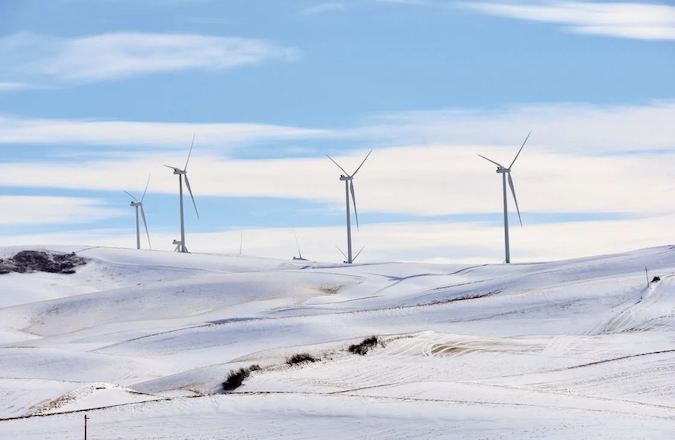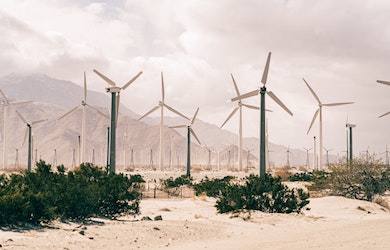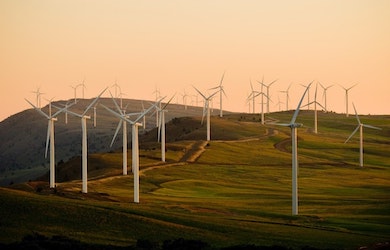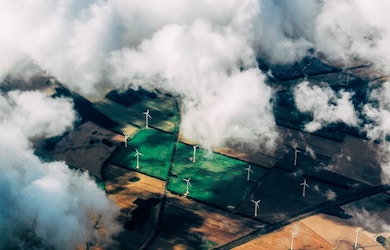As 2024 draws to a close, it’s an ideal time to reflect on the key developments that have driven the UK forward in its transition to cleaner energy. From unprecedented achievements in renewables to major policy shifts, this year has laid the groundwork for a greener and more sustainable future.
Renewables Overtake Fossil Fuels
For the first time, low-carbon renewables, including wind, solar, and hydropower, produced more electricity than fossil fuels in the UK. These clean energy sources accounted for 37% of the UK’s electricity generation (103 TWh), outperforming fossil fuels at 35% (97 TWh). Just three years ago, fossil fuels dominated at 46%, making this shift a significant milestone. This data comes from a report by Ember, an independent global energy research institute dedicated to using data and policy to accelerate the clean energy transition [1][2][3][4].
The report also outlined that a big part of this progress came from reducing our reliance on gas-powered electricity, which fell by 13% this year. This is the lowest level of gas-powered generation since 1996 [1]. On top of that, the UK officially closed its last coal power plant, joining a third of OECD nations (member countries of the Organisation for Economic Co-operation and Development) that are now coal-free [5].
Image: Wind Turbines on Snow Covered Field. [6]
Wind Power Taking the Lead
Wind power is on the verge of becoming the UK’s top source of electricity. Currently, it provides 29% of the country’s electricity (82 TWh), just behind gas at 30% (85 TWh) [1][2][3][4]. Depending on December’s weather, wind could even take the top spot for 2024 – a testament to its rapid growth and reliability.
Wind farms continue to expand and pop up across the UK, emphasising the potential of wind energy to push the nation closer to its clean power targets.
A Bold Policy Agenda for Net Zero
The new Labour government made bold moves to accelerate the UK’s transition to net zero [7]. After the July general election, several key policies were introduced to reshape the energy landscape, including:
- Great British Energy, a publicly owned company set up by the new government, was established to drive investment and innovation in renewables [8].
- Restrictions on onshore wind in England were removed, opening the door to new clean energy developments [9].
- The government also committed to achieving 100% clean power by 2030, setting an ambitious timeline for decarbonising the UK’s electricity system [7].
These policies drive the expansion of renewable energy infrastructure and advance climate targets, highlighting a stronger commitment to sustainability and innovation within government strategy.
Investing in Clean Energy Growth
In 2024, the government increased funding for renewable energy, with the biggest Contracts for Difference (CfD) auction ever [10]. Essentially, CfDs are a financial mechanism designed to encourage investment in low-carbon energy. They provide developers of renewable energy projects, like wind or solar farms, with a guaranteed “strike price” for the electricity they generate. If market prices fall below this strike price, the government pays the difference, ensuring financial stability for developers. Conversely, if market prices rise above the strike price, the developers pay back the excess to the government, protecting consumers from high energy costs. The auction budget grew by over 50% (to over £1.5 billion), allowing more clean energy projects to secure funding under this system [10]. This boost in investment shows that the government is focusing on expanding renewable energy, which will help make great progress in the coming years.
While CfD auctions remain key to renewable energy growth, new ideas like co-location projects are gaining attention. Co-location combines renewable energy sources like solar or wind with technologies such as battery storage or green hydrogen production at the same site [11]. This approach optimises land use, reduces costs, and increases grid flexibility by sharing infrastructure. It makes energy more reliable, enhances resource efficiency, and supports energy storage for peak demand.
Despite its potential to benefit both industry and consumers, only about 12% of UK onshore wind or solar projects currently include co-located battery storage or hydrogen electrolysers, due to policy and regulatory barriers [11].
Tackling Grid Challenges and Energy Surplus
As renewable energy capacity continues to grow, the UK faces two key challenges in energy supply industry: grid connection delays and the management of surplus energy during periods of high renewable generation.
Grid bottlenecks are a major issue, with some projects waiting until 2033 to connect. The transmission queue alone holds around 550GW of projects, far more than the 200-225GW needed by 2030 to meet clean energy goals [12]. To fix this, the National Electricity System Operator (NESO) plans to streamline the connection process, prioritising ‘ready’ and strategically important projects. These changes aim to cut delays, balance the mix of technologies, and speed up the shift to clean energy.
Another challenge is managing surplus energy. As renewable generation increases, there are times when the supply exceeds demand, leading to lower electricity prices and financial difficulties for generators. To tackle this, solutions such as battery storage, improved grid infrastructure, and flexible energy usage are becoming essential [13].
Looking Ahead to 2025
As we celebrate this year’s achievements and lessons, 2025 can only promise to build on this momentum. The challenges ahead require innovation, collaboration, and determination, but the progress we’ve made in 2024 gives us plenty of reasons to be optimistic.
To learn more about the topics discussed in this article, be sure to explore these Pager Power articles:
- The Role of the Contracts for Difference (CfD) Scheme in the ‘Cost of Living Crisis’
- UK’s Spring Budget 2024: Record Budget for Renewables
- Tidal Energy Record Win
About Pager Power
Pager Power undertakes technical assessments for developers of renewable energy projects and tall buildings worldwide. For more information about what we do, please get in touch.
References
- Mayo, F., 2024. UK low-carbon renewable power set to overtake fossil fuels for the first time. Ember. Available at: https://ember-energy.org/app/uploads/2024/12/Report-UK-low-carbon-renewable-power-set-to-overtake-fossil-fuels-for-first-time.pdf [Accessed 16 Dec. 2024].
- Elexon, 2024. Generation by fuel type. Elexon BSC Insights Solution. Available at: https://bmrs.elexon.co.uk/generation-by-fuel-type [Accessed 16 Dec. 2024].
- National Energy System Operator (NESO), 2024. Historic generation mix and carbon intensity. Available at: https://www.neso.energy/data-portal/historic-generation-mix [Accessed 16 Dec. 2024].
- Department for Energy Security and Net Zero, 2024. Energy Trends: UK renewables. Gov.UK. Available at: https://www.gov.uk/government/statistics/energy-trends-section-6-renewables [Accessed 16 Dec. 2024].
- Jones, D., 2024. Coal generation in OECD countries falls below half of its peak. Ember. Available at: https://ember-energy.org/latest-insights/coal-generation-in-oecd-countries-falls-below-half-of-its-peak/ [Accessed 16 Dec. 2024].
- Mikelle, 2022. Wind turbines on snow covered field. Pexels. Available at: https://www.pexels.com/photo/wind-turbines-on-snow-covered-field-10737809/ [Accessed 16 Dec. 2024].
- The Labour Party, 2024. Make Britain a clean energy superpower. Labour. Available at: https://labour.org.uk/change/make-britain-a-clean-energy-superpower/ [Accessed 16 Dec. 2024].
- Gov.UK, 2024. Great British Energy. Available at: https://www.gov.uk/government/organisations/great-british-energy [Accessed 16 Dec. 2024].
- Gov.UK, 2024. Policy statement on onshore wind. Available at: https://www.gov.uk/government/publications/policy-statement-on-onshore-wind/policy-statement-on-onshore-wind [Accessed 16 Dec. 2024].
- Gov.UK, 2024. Contracts for Difference and Capacity Market scheme update 2024. Available at: https://www.gov.uk/government/publications/contracts-for-difference-and-capacity-market-scheme-update-2024/contracts-for-difference-and-capacity-market-scheme-update-2024 [Accessed 16 Dec. 2024].
- RenewableUK, 2024. Making the most of renewables: the role of onshore co-location in accelerating an integrated energy system. Available at: https://www.renewableuk.com/media/qmbecrol/the-role-of-onshore-co-location-in-accelerating-an-integrated-energy-system.pdf [Accessed 16 Dec. 2024].
- National Energy System Operator (NESO), 2024. Great Britain’s Connections Reform: Overview Document. Available at: https://www.neso.energy/document/346816/download [Accessed 16 Dec. 2024].
- National Grid, 2024. Energy Explained. Available at: https://www.nationalgrid.com/stories/energy-explained/what-is-renewable-energy-storage [Accessed 16 Dec. 2024].




